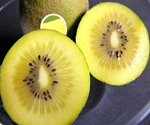Sell similar like these, 1 Gallon trees are cutting.
but we will repack it with 4" pot to save the shipping cost.
| $24.99+shipping fee($9.99) | out of stock |
|---|
- Reduce the time to flowering.
- Shorten the breeding fruit.
- Beacuse you have a cutting tree.

Sell similar like these, 1 Gallon trees are cutting. but we will repack it with 4" pot to save the shipping cost.
|
 |
Golden KiWi FRUIT (Actinidia deliciosa)Growth Habit: In the forests where it is native, the plant is a vigorous, woody, twining vine (liana) or climbing shrub. It is not unusual for a healthy vine to cover an area 10 to 15 feet wide, 18 to 24 feet long and 9 to 12 feet high. In cultivation it is supported on a trellising system |
|

|
||
|
||